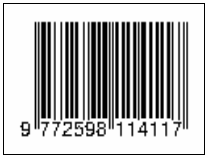Seed Health and Quality of Rice Seeds Produced by Farmer and Growing in Cho Moi District, An Giang Province, Vietnam
Abstract
Full Text:
PDFReferences
Barnett, H. L., & Barry, B. H. (1998). Illustrated genera of imperfect fungi. The American Phytopathological Society.
Butt, A. R., Yaseen, S. I., & Javaid, A. (2011). Seed-borne mycoflora of stored rice grains and its chemical control. The Journal of Animal and Plant Science, 21(2), 193-196.
Can, N. D., & Vromant, N. (2006). Mekong Delta Development Research Institute, Can Tho University.
Center for research - consultancy of social work and community development. (2007). PRA Tool - Participatory rural assessment method. . Ho Chi Minh City.
Department of Agriculture and Rural Development of An Giang Province. (2014). Detailed Planning Areas by An Giang Province till 2020 and vision to 2030.
Hoa, N. V. (2006). Varieties and Rice Production Season in Mekong Delta. Agricultural Publisher.
ISTA-International Seed Testing Association. (1996). International rules for seed testing. Seed Science and Technology 21 (Suppl.).
Khoa, L. V., & Duong, N. T. (2012). The situation of cultivation and production potential of weathered land in Tri Ton district, An Giang province. Journal of Science, 78-86.
Mathur, S. S., & Kongsdal, O. (2000). Common laboratory seed health testing methods for detecting fungi. Copenhagen: Insitute of Seed Pathology.
Mew, T. W., & Misra, J. K. (1994). A manual of rice seed health testing. Philippines: International Rice Research Institute.
Mew and Gonzales (2002)...
Minh, N. V., & Xuan, V. T. (2007). Building a sustainable farming system in crop restructuring in high sandy land in the seven mountains of An Giang. Journal of Science 2007: 8, 57-66.
Nguyễn Thị Kiều My et al. (2017)....
Report to the People's Committee of Le Tri commune. (2018). Report on socio-economic implementation situation in 2018 and directions and tasks for socio-economic development in 2019.
Statistical Yearbook. (2015). People's Committee of Le Tri commune.
Tai, D. A. (2008). Curriculum analysis statistics. Hanoi: Statistical Publishing House.
Thuy, T. T., Nam, N. T., Nhi, V. T., Nhuong, N. T., Nguyen, N. P., Tam, L. C., & Trinh, L. T. (2012). Seed-borne mycoflora of rice grains at seven provinces of Mekong Delta. Agriculture Press.
Thuy, Tran Thi Thu. (2011). Identification of Fungal cause of False Smut Seed in Mekong Delta. Journalist of Can Tho University (a), 155 – 163.
Trung, T. S., Bailly, J. D., Querin, A., Le, B. P., & Guerre, P. (2001). Fungal contamination of rice from south Vietnam, mycotoxinogenesis of selected strains and residues in rice. Revue de Médecine Vétérinaire, 152(7), 555-560.
Tuat, N. V., Vien, N. V., & Thanh, D. T. (2004). Research of seed disease and measures to improve seed health in Vietnam. Agriculture and Rural Development 7, 931-933.
Utopo, E. B., Ogbodo, E. N., & Nwogbaga, A. C. (2011). Seedborne mycoflora associated with rice and thỉ influence on growth at Abakaliki, Southeast Agro-Ecology, Nigeria. Libyan Agriculture Research Center Journal Internation, 79-84.
Vietnam Standard. (2011). TCVN 1700:2011. Crops varieties – Test Methods. National Standard. Ministry of Scientific and Technological. Vietnam.
Zafar, M., Jamal, A., Tahira, R., Zakria, M., & Naeemullah, M. (2014). Incidence of Seed-Borne Mycoflora in Wheat and Rice Germplasm. International Journal of Agriculture Innovations and Research, 720-722.
Refbacks
- There are currently no refbacks.








